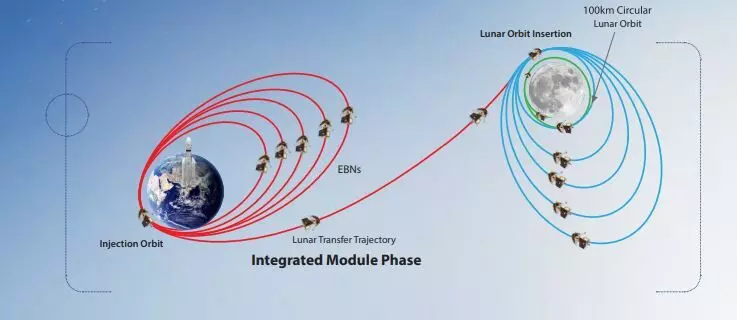With bated breath, millions of Indians are following the upcoming launch of the Chandrayaan-3 mission of the India Space Research Organisation [ISRO] which is supposed to begin at 2:35 PM today, on July 14.
As per ISRO, Chandrayaan-3 is a follow-on mission to Chandrayaan-2 to demonstrate end-to-end capability in safe landing and roving on the lunar surface.
“It consists of Lander and Rover configuration. It will be launched by LVM3 [Launch Vehicle Mark-3] from Satish Dhawan Space Centre, Sriharikota. The propulsion module will carry the lander and rover configuration till 100 km [kilometres] lunar orbit,” ISRO stated in its official remarks on the mission.
All preparations are done at @isro. #Chandrayaan-3 launch countdown to begin today at 2:30 PM (IST) onwards pic.twitter.com/fqvE5nKIv2
— Indian Aerospace Defence News – IADN (@NewsIADN) July 14, 2023
The Chandrayaan-3 mission aims at learning from the Chandrayaan-2’s failed attempt to land on the Moon’s surface. On July 22, 2019, Chandrayaan-2, in its final moments of touching down on the lunar surface, lost contact with the ISRO and the mission was deemed to be unsuccessful. ISRO lost contact with ‘Vikram’ — the space vehicle carrying the rover which was supposed to land on the Moon — when it was barely 335 metres from the Moon’s surface.
Also Read: India’s ‘Deep Ocean Mission’ — what is its purpose and significance

If Chandrayaan-3 is able to perform a successful soft landing, it will make India the fourth country, after the United States, Russia, and China, to achieve the coveted feat.
What more does Chandrayaan-3 seek to achieve?
As mentioned by ISRO in an official handbook, Chandrayaan-3 consists of an indigenous propulsion module, lander module, and a rover with an objective of developing and demonstrating new technologies required for inter-planetary missions.
The propulsion module will bring the lander/rover into a 100 kilometres circular polar lunar orbit and separate.
“The lander will then touch down with the rover in the south polar region of the Moon, near 69.37 S, 32.35 E. For the scheduled launch time, touchdown is expected to occur near the end of August. Touchdown velocity is planned to be less than 2 m/s [metre per second] vertical and 0.5 m/s horizontal,” the National Aeronautics and Space Administration [NASA] mentions in its notes on the Chandrayaan-3 mission.
Also Read: A village school where children fly model aircraft and dream about becoming scientists
Till date, no country has landed a spacecraft on the south pole region of the moon. If achieved by Chandrayaan-3, it will be an unprecedented feat.

“The propulsion module / communications relay satellite will remain in lunar orbit to enable communications with Earth. Chandrayaan 2 will also be used as a backup relay. The lander and rover are designed to operate for one lunar daylight period (about 14 Earth days),” it added.
As per ISRO, here are the three official tasks that Chandrayaan-3 seeks to accomplish:
- To demonstrate Safe and Soft Landing on Lunar Surface
- To demonstrate Rover roving on the moon
- To conduct in-situ scientific experiments.
What is LVM3 — the propulsion system
According to ISRO, LVM3 is the operational heavy lift launch vehicle of ISRO and has a spectacular pedigree of completing six consecutive successful missions. This is the fourth operational flight of LVM3.

LVM3 has proved its versatility to undertake most complex missions like injecting multi-satellites, mission planning to ensure safe relative distance among separated satellites through re-orientation and velocity addition manoeuvres, and execute interplanetary missions.
It is India’s largest and heaviest launch vehicle ferrying Indian and international customer satellites.


















